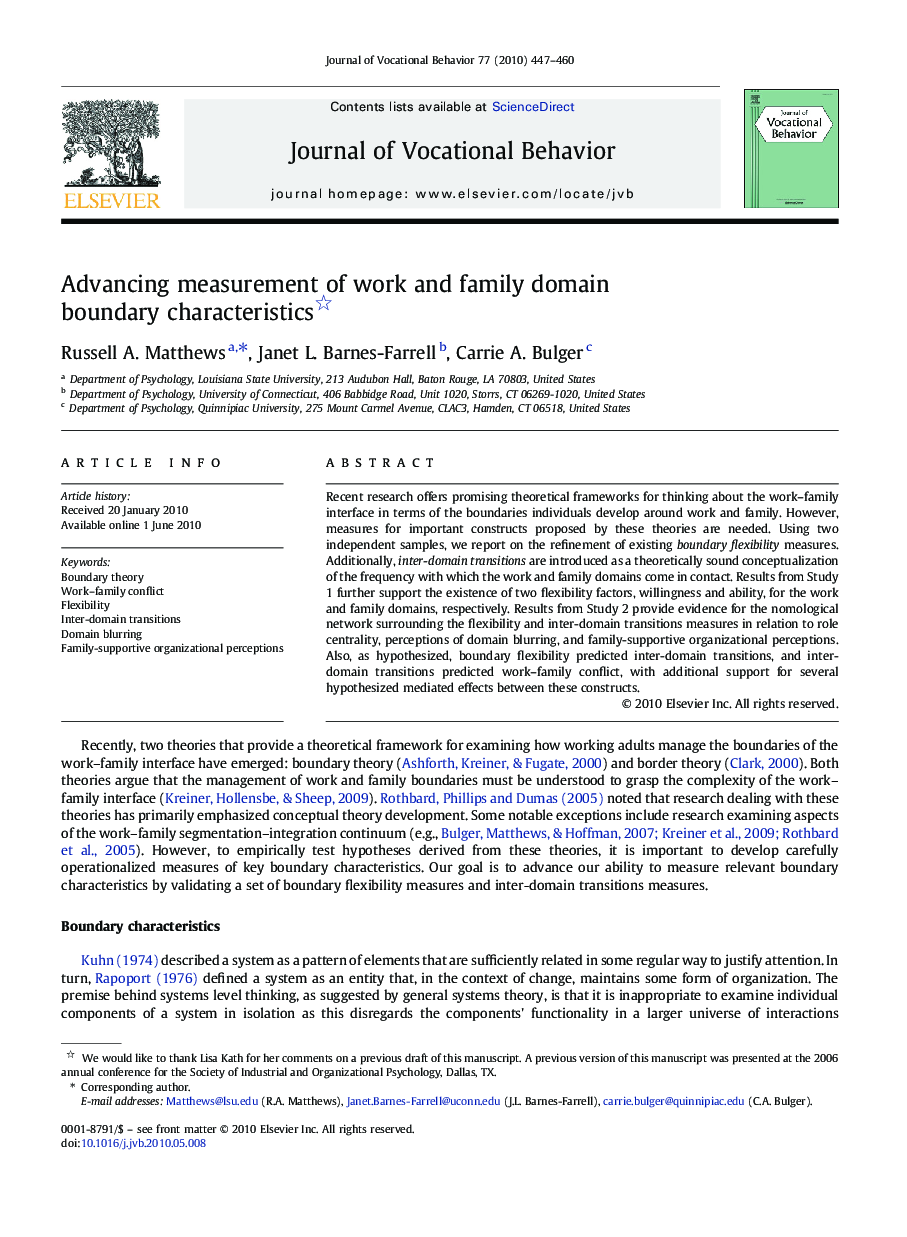| Article ID | Journal | Published Year | Pages | File Type |
|---|---|---|---|---|
| 887325 | Journal of Vocational Behavior | 2010 | 14 Pages |
Recent research offers promising theoretical frameworks for thinking about the work–family interface in terms of the boundaries individuals develop around work and family. However, measures for important constructs proposed by these theories are needed. Using two independent samples, we report on the refinement of existing boundary flexibility measures. Additionally, inter-domain transitions are introduced as a theoretically sound conceptualization of the frequency with which the work and family domains come in contact. Results from Study 1 further support the existence of two flexibility factors, willingness and ability, for the work and family domains, respectively. Results from Study 2 provide evidence for the nomological network surrounding the flexibility and inter-domain transitions measures in relation to role centrality, perceptions of domain blurring, and family-supportive organizational perceptions. Also, as hypothesized, boundary flexibility predicted inter-domain transitions, and inter-domain transitions predicted work–family conflict, with additional support for several hypothesized mediated effects between these constructs.
